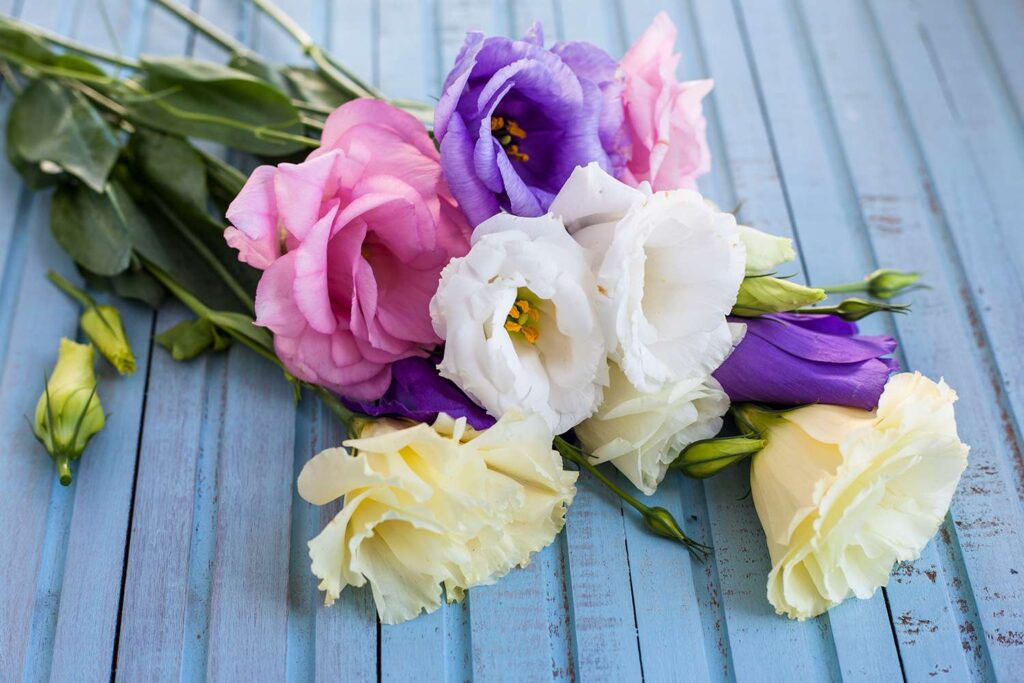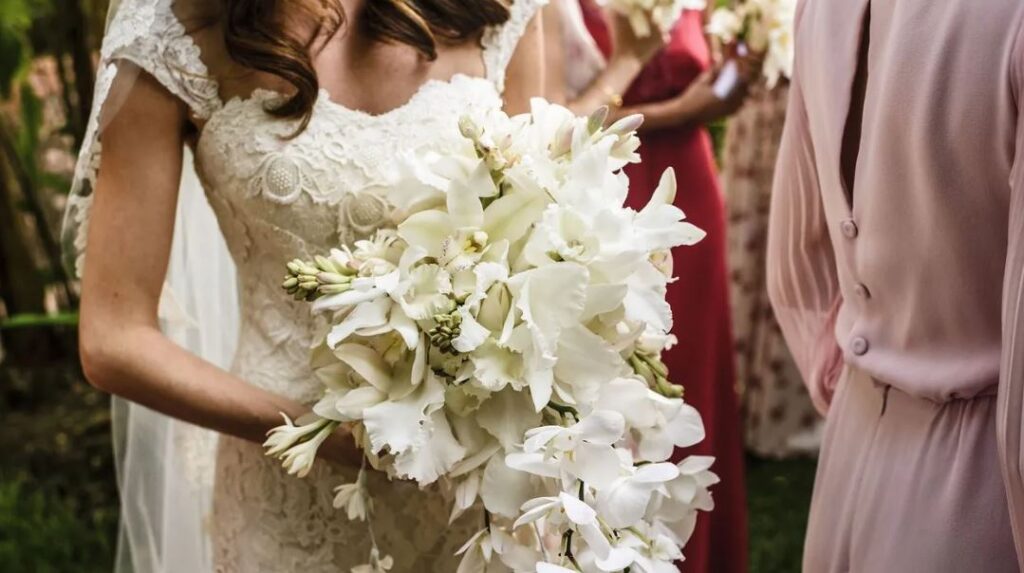Flowers hold a significant role in wedding ceremonies across various cultures around the world. From their historical symbolism to their modern interpretations, flowers add beauty, meaning, and tradition to the celebration of love. This article delves into the various ways flowers are incorporated into global wedding traditions, highlighting their symbolism, cultural significance, and unique practices.
Understanding the Symbolism of Flowers in Weddings
In many cultures, flowers are much more than mere decorations—they carry deep symbolism that represents love, fertility, purity, and new beginnings. The language of flowers, known as floriography, assigns meaning to different types of flowers, enabling couples to express their emotions through their floral arrangements.
The Evolution of Flower Symbolism in Weddings
Over time, the symbolism of flowers for wedding has evolved, adapting to the changing beliefs and customs of societies. While certain flowers have maintained their traditional meanings, others have gained new interpretations to reflect the values of modern couples.

Flower symbolism has a rich history that dates back centuries. In ancient Rome, for example, brides would carry bouquets of herbs and flowers to ward off evil spirits and ensure a prosperous marriage. The Victorians, on the other hand, took flower symbolism to a whole new level, using specific flowers to convey secret messages. Each flower had a unique meaning, allowing couples to communicate their feelings discreetly.
In today’s weddings, the choice of flowers holds great significance. Roses, for instance, have long been associated with love and passion. They are a classic choice for romantic weddings, symbolizing deep affection between the couple. On the other hand, lilies represent purity and innocence, making them a popular choice for couples who value these qualities.
As society continues to evolve, so does the symbolism of flowers in weddings. Modern couples are embracing new interpretations and incorporating unconventional flowers into their arrangements. Sunflowers, for example, symbolize happiness and optimism, making them a perfect choice for couples who want to celebrate their joyous union.
Furthermore, the colors of flowers also carry symbolic meanings. White flowers, for instance, are often associated with purity and innocence, while red flowers symbolize passion and love. Pink flowers represent grace and gratitude, while yellow flowers symbolize friendship and joy. By carefully selecting the colors of their floral arrangements, couples can enhance the symbolism and overall aesthetic of their wedding.
It is important to note that while flower symbolism can add depth and meaning to a wedding, personal preferences should always be considered. Couples should choose flowers that resonate with them on a personal level, regardless of their traditional symbolism. After all, a wedding is a celebration of love, and the flowers should reflect the unique bond between the couple. Visit https://bloomengine.net/making-birthdays-brighter-tips-for-selecting-the-perfect-bouquet for selecting the perfect bouquet.
The Role of Flowers in Different Cultural Wedding Traditions
Flowers play an integral part in various cultural wedding traditions, contributing to the overall ambiance and symbolism of the ceremonies. From Western weddings to Asian, African, and Latin American traditions, each culture infuses flowers in its unique way.
Flowers in Western Wedding Traditions
Western weddings often feature a bouquet carried by the bride, symbolizing her beauty and fertility. The carefully chosen flowers in the bouquet hold special meanings, such as roses representing love and lilies symbolizing purity. Additionally, flowers are used to decorate the venue, the altar, and the reception tables, creating a visually stunning atmosphere. The fragrance of the flowers fills the air, enhancing the sensory experience for the guests.
Moreover, the tradition of throwing the bouquet has its roots in ancient customs. It is believed that catching the bouquet brings good luck and is a sign that the person who caught it will be the next to get married. This playful tradition adds an element of excitement and anticipation to the wedding celebration.
The Significance of Flowers in Asian Wedding Traditions
Asian weddings embrace flowers as symbols of good luck, prosperity, and happiness. In Indian weddings, the bride and groom exchange flower garlands as a sign of their acceptance and love for one another. These garlands, called “varmala” in Hindi, are made with fragrant flowers like jasmine, roses, and marigolds. The exchange of garlands is a beautiful ritual that signifies the union of two souls.
Furthermore, flowers hold deep cultural significance in Asian weddings. In Chinese weddings, red flowers, such as peonies and chrysanthemums, are commonly used as they symbolize love, wealth, and a prosperous future. In Japanese weddings, cherry blossoms are often incorporated, representing purity and the transient nature of life. Each flower chosen for an Asian wedding holds a special meaning, adding layers of symbolism to the ceremony.

Floral Traditions in African Weddings
African wedding ceremonies showcase vibrant floral displays that reflect the region’s rich cultural heritage. From traditional Zulu weddings in South Africa to Ethiopian wedding ceremonies, flowers play a vital role in the festivities, symbolizing beauty, unity, and fertility. The use of indigenous flowers and plants adds a unique touch to African weddings, connecting the couple to their roots and ancestors.
In some African cultures, the bride wears a floral crown or carries a bouquet made of traditional flowers, such as proteas, amaryllis, or African lilies. These flowers not only enhance the bride’s beauty but also serve as a symbol of her connection to nature and the land. The vibrant colors and intricate designs of African floral arrangements create a visually striking backdrop for the wedding celebrations.
The Use of Flowers in Latin American Wedding Ceremonies
In Latin American weddings, flowers are used abundantly, reflecting the region’s passion and vibrancy. From elaborate floral arches to colorful bouquets, flowers add an exuberant touch to the celebrations. The choice of flowers varies across different countries and cultures within Latin America.
In Mexican weddings, marigolds are often used as they are believed to attract souls of the deceased to bless the couple’s union. In Brazilian weddings, orchids are a popular choice, symbolizing love, luxury, and beauty. The floral arrangements in Latin American weddings are often bold and dramatic, capturing the festive spirit of the occasion. Learn more about
Furthermore, flower petals are frequently used in Latin American wedding traditions. The couple may walk on a path scattered with petals, representing a colorful and fragrant start to their journey together. This romantic gesture adds a touch of whimsy and enchantment to the wedding ceremony.
Unique Floral Practices in Global Weddings
While flowers hold common symbolism across cultures, there are unique practices that are found only in specific regions or countries. These practices add an extra layer of cultural significance to the role of flowers in weddings.
The Japanese San San Kudo
In Japan, the San San Kudo is a traditional wedding ceremony that involves the couple sipping from three different-sized cups of sake. Each cup is wrapped in a sakaki tree branch, symbolizing purity and the couple’s union.
The San San Kudo ceremony is a deeply meaningful and symbolic ritual in Japanese weddings. It represents the joining of two families and the blending of their lives together. The cups of sake, wrapped in sakaki tree branches, hold great significance. The sakaki tree is considered sacred in Japanese culture and is believed to ward off evil spirits. By sipping from the cups, the couple is not only sharing a drink but also symbolizing the purity of their love and their commitment to each other. Click here for more information about Japanese wedding traditions.
Furthermore, the different sizes of the cups used in the San San Kudo ceremony hold their own symbolism. The largest cup represents the groom, the medium-sized cup represents the bride, and the smallest cup represents their future child. This symbolism emphasizes the importance of family and the continuation of their lineage.

The Indian Var Mala Ceremony
The Var Mala ceremony in Indian weddings involves the exchange of floral garlands between the bride and groom. This exchange signifies their acceptance of each other and the start of their married life together.
The Var Mala ceremony is a beautiful and joyous moment in Indian weddings, filled with vibrant colors and fragrant flowers. The exchange of garlands between the bride and groom is symbolic of their acceptance and love for each other. The garlands are made with carefully selected flowers, each carrying its own significance. For example, marigolds are often used in Indian weddings as they are believed to bring good luck and prosperity.
During the Var Mala ceremony, the bride and groom place the garlands around each other’s necks, signifying their willingness to embark on this new journey together. This exchange represents the unification of two souls and the start of their married life. It is a moment filled with anticipation, excitement, and the blessings of their families and loved ones.
The Hawaiian Lei Exchange
Hawaiian weddings include a lei exchange between the bride and groom as a symbol of love, respect, and aloha spirit. The lei, made from fresh flowers or even seashells, is a beautiful representation of the couple’s unity and connection.
The Hawaiian lei exchange is a deeply rooted tradition in Hawaiian culture and holds great significance in weddings. The lei, made from vibrant and fragrant flowers, represents love, respect, and the spirit of aloha. It is a symbol of the couple’s unity and the bond they share.
In Hawaiian weddings, the bride and groom exchange leis as a gesture of their love and commitment to each other. The act of placing the lei around each other’s necks is a symbolic embrace, signifying the joining of their lives and the creation of a new family. The beauty and fragrance of the lei serve as a reminder of the love and happiness that surrounds them on this special day.
It is worth noting that the materials used to make the lei can vary. While fresh flowers are commonly used, some couples opt for unique leis made from seashells or other natural elements. This choice adds a personal touch to the ceremony and reflects the couple’s individuality and connection to the Hawaiian culture and environment.
Modern Interpretations and Adaptations of Floral Wedding Traditions
As weddings embrace modern trends and sustainable practices, floral traditions have also evolved. Couples now opt for eco-friendly floral choices or even substitute real flowers with paper or fabric alternatives.
Eco-Friendly Floral Choices for Weddings
In response to environmental concerns, couples are choosing locally sourced, organic, and sustainably grown flowers for their wedding arrangements. This eco-conscious approach ensures that the beauty of flowers does not harm the planet.
The Rise of Paper and Fabric Flowers in Weddings
Paper and fabric flowers have gained popularity as an alternative to fresh flowers, offering a long-lasting and customizable option for bouquets, centerpieces, and decorations. These handmade creations provide a unique touch and can be cherished as keepsakes long after the wedding.
In conclusion, flowers hold a crucial role in global wedding traditions. From their symbolism to their unique practices and modern adaptations, flowers continue to captivate couples and their loved ones, enhancing the beauty and meaning of their special day. Whether it is through the exchange of garlands, the arrangement of bouquets, or the creation of imaginative alternatives, flowers will forever remain an integral part of weddings worldwide.
